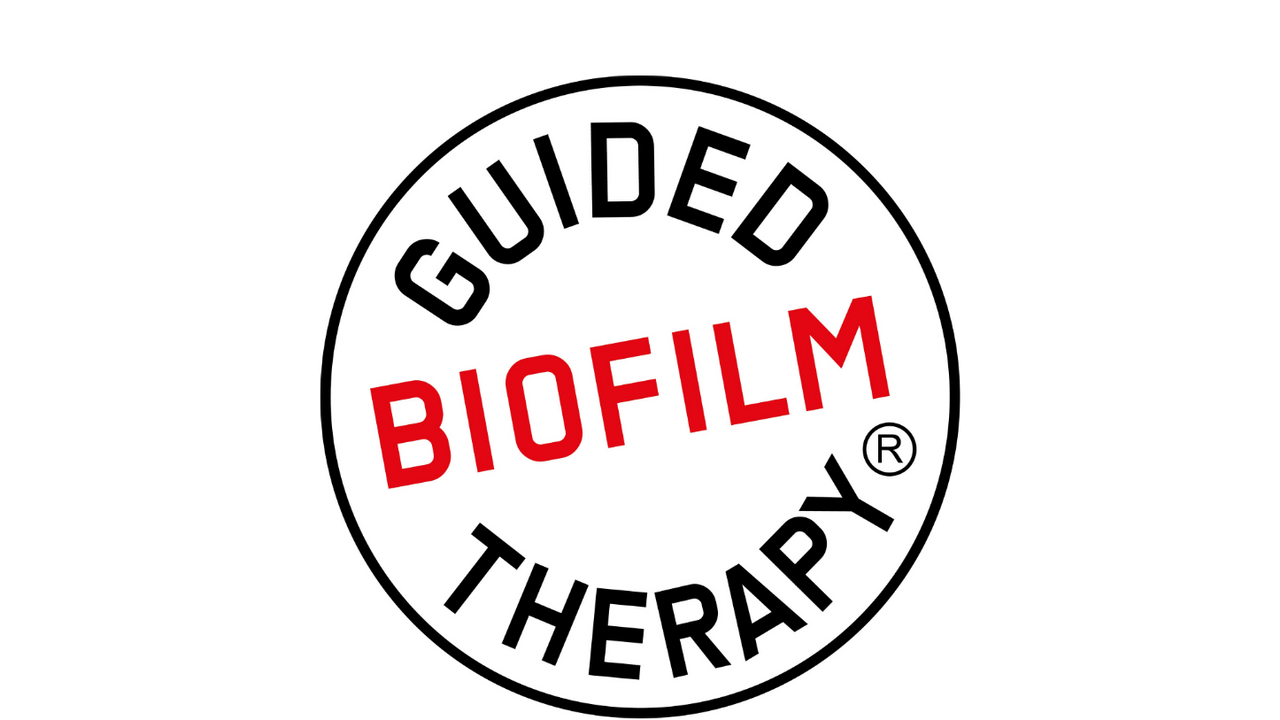Robust Theme
Dec 09, 2019 2020-04-08 7:40Robust Theme
Guided Biofilm Therapy-A Must for Implantologists

Biofilm is the cause of not only decay but gum disease. Unfortunately, biofilms structure in essence protects oral bacteria against antimicrobials and even antibiotics. Its strong adherence qualities make it extremely challenging to remove but can be accomplished by using ultrasonic scalers, rubber cup polishing and air polishing. Unfortunately, ultrasonic scalers and traditional rubber cup polishing can’t access some areas that biofilm hides.
Historically, conventional air polishers for supragingival polishing used air, water and abrasive powders and was contraindicated for many patients. Low sodium diets, patients that are immuno-compromised, have respiratory problems or undergoing chemotherapy and radiation. Additionally, patients that have a communicable infection, take medications that effect the acid-base balance such as potassium and anti-diuretics. Those air polishers shouldn't be used in areas of composites and glass ionomer keeping in mind to avoid amalgam margins and crowns.
Thankfully there has been an introduction of a new air polishing system that can treat supragingivally and subgingivally with a host of therapeutic benefits and very little issue of contraindications.
The use of glycine powder is a safer alternative to sodium bicarbonate for effective stain and biofilm removal without risk of harming oral tissues such as dentin and cementum. It is 80% less abrasive than sodium bicarbonate and is safely used on restorative materials, dental implants and in periodontal pockets up to 5mm.1,2,3 Guided biofilm therapy is quicker, more comfortable and most importantly more effective.
Use for Implants: Glycine and Erythritol
During the 2015 EuroPerio Consensus Conference, recommendations on the clinical application of air polishing for the management of peri-implant mucositis and peri-implantitis were discussed and published.4 Nine consensus statements were developed on the effects of subgingival air polishing with glycine powder. Some are as follows:
- Safe for use on implants and implant-supported restorations
- Safe for treatment of both peri-implant mucositis and peri-implantitis
- Results in clinical improvements, such as reduction in bleeding on probing
A systematic review of nonsurgical treatment for peri-implantitis showed that the use of glycine was successful in reducing bleeding on probing when compared with hand instrumentation.5
- Demonstrates effective biofilm disruption
Another option is air polishing with erythritol. A 2014 study published in the Journal of Periodontology compared erythritol and chlorhexidine air-polishing powder to glycine powder. In-vitro results revealed a stronger antimicrobial activity of the erythritol-based powder than the glycine powder and more powerful antibiofilm activity present with the erythritol-based powder compared to glycine.
Like glycine, erythritol powder obliterates biofilm safely and effectively. Additionally, it has anticariogenic, antibiofilm, and antioxidant properties, and is more efficient in stain and biofilm removal compared to glycine and has antibacterial potential against specific pathogens. Glycine is 25 microns and erythritol is 14 microns, so erythritol has a smaller particle size and is less abrasive by comparison. Erythritol particles also are 37% harder than glycine, so they are more efficient in stain and biofilm removal than glycine. Nice.
In a 2016 study, four strains of bacteria taken from a peri-implantitis lesion were added to sterile titanium disks until mature biofilm formed, then AIRFLOW Plus Powder was dissolved in a sterile saline solution and added to the biofilm mass. The powder promoted inhibitory effects against the microorganisms and reduced formation of new biofilms because its anti-adherence property.6 Erythritol also has been shown to suppress maturation of gingivitis biofilms in vitro and promote biofilm composition that is more consistent with early colonizers rather than pathogenic species.7 Notable reductions of pathogenic species in biofilms in the presence of erythritol consumption led one author to conclude that erythritol could be used to help prevent periodontal diseases.8 A direct comparison between glycine and erythritol powders, in vitro, concluded that erythritol plus powder possessed greater antimicrobial properties than glycine, positioning it as a valuable alternative to glycine. Erythritol powder air polishing may not remove calcified deposits the biofilm management around implants and teeth show far more benefits than scaling and traditional polishing alone.
Whether using glycine or erythritol, biofilm management is key to keeping implants healthy and therefore long lasting. The investment in a guided biofilm therapy device can be costly but that investment will be an asset to the dental practice.
- Tastepe CS, Lin X, Donnet M, Wismeijer D, Liu Y. Parameters that improve cleaning efficiency of subgingival air polishing on titanium implant surfaces: an in vitro study. J Periodontol. 2017;88:407–414.
- Petersilka GJ, Steinmann D, Häberlein I, Heinecke A, Flemmig TF. Subgingival plaque removal in buccal and lingual sites using a novel low abrasive air–polishing powder. J Clin Periodontol. 2003;30:328–333.
- Glycine powder used on enamel glass ionomer cement a reduced change in surface as compared to sodium bicarbonate and aluminum trihydroxide powders. Barnes CM, Hayes EF, Leinfelder KF. Effects of an airabrasive polishing system on restored surfaces. Gen Dent. 1987;35:186–189.
- Schwarz F, Becker K, Bastendorf KD, et al. Recommendations on the clinical application of air polishing for the management of peri-implant mucositis and peri-implantitis. Quintessence Int. 2016;47:293–296.
- Muthukuru M, Zainvi A, Esplugues EO, Flemmig TF. Non-surgical therapy for the management of peri-implantitis: a systemic review. Clin Oral Implants Res. 2012;23(6 Suppl):77–83.
- Drago L, Del Fabbro M, Borolin M, Vanessa C, Vecchi E, Taschieri S. Biofilm removal and antimicrobial activity of two different air-polishing powders: an in vitro study. Journal of Periodontology 2014; 85:e363-e369.
- Janus MM, Volgenant CMC, Brandt BW, et al. Effect of erythritol on microbial ecology of in vitro gingivitis biofilms. J Oral Microbiol. 2017;9(1):1337477. doi: 10.1080/20002297.2017.1337477.
- Hashino E, Kuboniwa M, Alghamdi SA, et al. Erythritol alters microstructure and metabolomics profiles of biofilm composed of Streptococcus gordonii and Porphyromonas gingivalis. Mol Oral Microbiol. 2013;28(6):435-51. doi: 10.1111/omi.12037.
*Guided Biofilm Therapy is a Registered Trademark of EMS Medical


